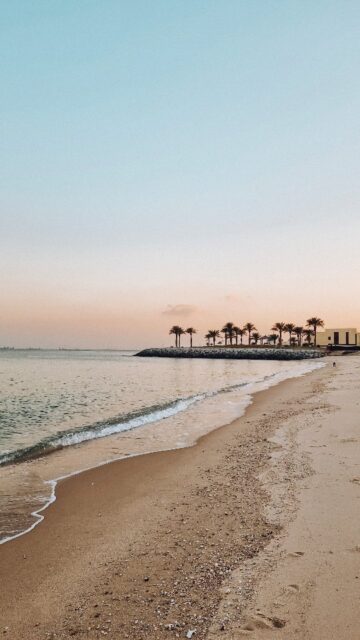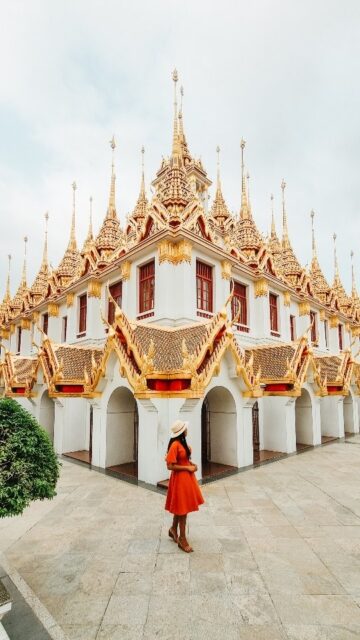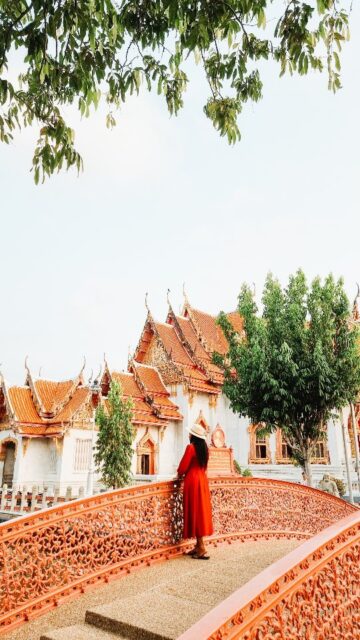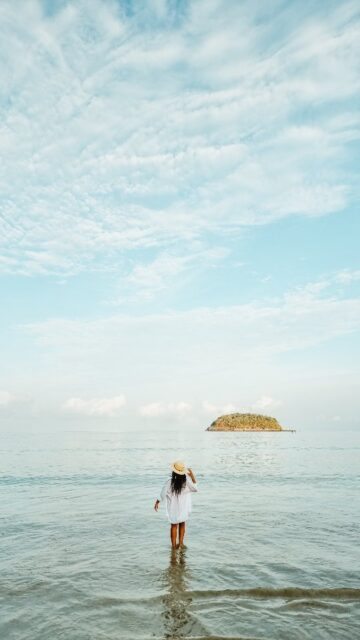In the morning we decided to visit the Giraffe Centre, the skies opened up and it began to pour rain. That didn’t stop us from going anyway but thankfully, (is that selfish to say?) it probably stopped other people. Because, when we arrived at the centre, save for one other tourist, we had the place to ourselves!
The Giraffe Centre is a very popular tourist attraction in Nairobi and I have read reviews about the experience being diminished by the sheer amount of tourists and selfie enthusiasts who visit. To avoid the crowd, we decided to visit as soon as the centre opened at 9 am. Two years ago, when Mark visited at about the same time, there were still a considerable number of people queuing up to get tickets. But these days, tourist attractions are not as busy as they used to be.
Upon arrival, we presented a copy of our online tickets for validation at the ticket booth and then continued to the built-up platform area to see the giraffes. There, we were met by a guide who handed us a shell of pellets to feed them. He then proceeded to give us a quick brief about the activity and demonstrated how to feed them as well.



One of the things he highlighted was to never approach the giraffes without a pellet in hand. ‘No food, No Friendship‘ was the phrase he used and as we eventually saw, this was true. Apart from ignoring you completely if you have no food, the giraffes (especially one named Salma) tend to swing their heads aggressively at you! There’s a sign that tells you to watch out for giraffe headbutts!
We also had the opportunity to interact with the giraffes at the lower feeding area. Here, you can typically get more up close and personal with them however, due to the pandemic, a new barricade has been placed to further widen the distance between you and the animals. Nevertheless, it is still an excellent spot for interaction, observing the resident warthogs and also taking great photos!

2024 Update: I revisited the Giraffe Centre and another platform has been installed, further separating the giraffes from humans. The platform certainly gives the place a better look but I liked it better when we could get closer.

On a normal day, we would have been out of the centre after about 20 minutes because there’s not much else to do there. But we had time to kill and a nearly empty place, so we lingered and enjoyed our time between the cafe, shop and feeding platforms.
After our feeding session, we went into the small exhibition area to read more about the giraffes. A guide was also at hand to go through the materials and answer questions that we had. There I learned about the history of the Giraffe Centre and the different types of giraffes found in Kenya and the rest of Africa.
What's Covered in this Post
History of the Giraffe Centre
The Giraffe Centre was established by the African Fund for Endangered Wildlife (AFEW) to preserve the Rothschild Giraffe. It was set up by Jock and Betty Leslie-Melville when they realized that these species of giraffes, only found in East Africa, were almost going extinct.

They began their conservation efforts by raising two Giraffes in their home (which is now the exclusive Giraffe Manor hotel) and eventually starting a breeding program through them. In 1983, after successfully raising enough funds, they opened the Giraffe Centre to the public.
In the exhibition room, I also saw a map that highlighted the West African Giraffe indigenous to Nigeria and a few other West African countries and I couldn’t help but wonder if those were extinct already. Perhaps we also need a program like this.
After the little lecture by the guide, it was time to leave our new tall friends behind. Our initial plan was to visit the David Sheldrick Elephant Orphanage but it was closed, so we decided to check out the AFEW Nature Sanctuary Forest Trail just opposite the Giraffe Centre before we headed out for lunch.


Giraffe Centre Nature Trail
The relatively small trail is also maintained by the African Fund for Endangered Wildlife and is available to visitors at no extra charge. The trail is pleasant and very easy to walk through. It also features several small animals, birds and giraffes. We passed by a path marked ‘Giraffe Only Walkway’ and encountered several monkeys swinging from tree to tree.
I’m guessing some of the giraffes from the Manor and Giraffe Centre often make their way to this trail. If you visit and are lucky to see a giraffe in this area, remember to keep your distance as these are still relatively wild animals.


With our stop at the Nature Sanctuary Forest Trail, our excursion came to an end. I had a wonderful time visiting both this place and the Giraffe Centre. While I think I had my fill of the centre, I’d love to visit the Forest Trail again. Next time, I’ll try not to miss the views of the Ngong Hills.
Finally, if you’re planning to visit anytime soon, here are a few tips and resources to help plan your visit…
Visiting the Giraffe Centre in Nairobi – What to expect, the best time to visit + tips to ensure a rewarding experience! SHARE ON TWITTERSetting your Expectations Correctly…
On the surface, the Giraffe Centre is akin to a petting zoo. It is very small and the highlight of a visit is the opportunity to feed and kiss* the giraffes. Kissing the giraffes simply means putting a pellet in between your lips and letting them get it from there.
Best time to visit the Giraffe Centre
I’ve read a few negative reviews about people’s experiences and I can see why and how a visit here can be ruined. If possible, try to visit during non-peak hours (see the section below) to avoid the crowd and book your tickets online. I have also read about people finding the discrepancies between the entrance fees discriminatory and feeling like they’re being ripped off. I think it helps to consider that the fees you pay go a long way in supporting Kenya’s amazing conservation efforts.
At the end of the day, if you still don’t feel like this is worth the time and the money, it may be worth your while to see these majestic animals (and others) in the wild. To do so, you can visit the Nairobi National Park (which is in the same area) or any other National Reserve in Kenya. PS: You can read about my experience in Masai Mara below.
Giraffe Centre Opening Hours
The Giraffe Centre opens daily from 9 am – 5 pm. This includes weekends and Public Holidays and judging by our experience, the best time to visit the giraffe centre is between 9 and 10 am. Although we visited on a Saturday, I’d recommend going on a Sunday during those same hours. That seems like the most likely time to visit with fewer people.
Giraffe Centre Directions: Getting There…
We arrived at the Giraffe Centre after a 40-minute ride via Bolt. The ride cost us about $7 ( and $4 for our return trip). If you choose to travel via public transportation, which costs less than a dollar, here’s a post with details on which buses and routes you can take.
Giraffe Centre Entry Fees
The Giraffe Centre charges an entrance fee of Ksh1,500 (~$15) and Ksh750 for Non-Resident adults and children respectively while resident adults and children pay an entrance fee of Ksh400 and Ksh200 respectively. You can purchase your tickets at the Giraffe Centre’s website if you have a local number. We did, using MPESA but there’s also an option for card payments.
I also tried to simulate paying as a foreigner and for some reason, the site did not accept my Nigerian number or have ‘Nigerian’ as a nationality to choose from in the drop-down menu. If you are having issues purchasing a ticket online, you can do so onsite, using only the card option or MPESA. The centre does not accept cash.

Have you been to the Giraffe Centre in Nairobi? Was it a hit or a miss for you? OR is it a place you’re keen on visiting if you haven’t done so before? Let me know in the comment section below!










very detailed article with beautiful pictures. The giraffe centre looks amazing.
Thanks for your comment, Davies!
Definitely a big hit Amarachi! it’ll be fun to pet giraffes someday while evading their lethal headbutts of course… LoL. I’ve seen so many giraffe kissing photos on IG and I thought twas’ natural… thanks for sharing that hack. I can’t be lied to anymore. 😆
The way Kenyans preserve wildlife is admirable and a major contributor to their tourism industry. The rest of the world particularly Nigeria needs to learn from em.
Spot on, Emmanuel!
Thanks.
Hi, Amarachi, it’s been a minute here! Wow, I have a lot to catch up on.
I particularly love your photo on Instagram from this trip. It’s so lovely❤
Thank you, Favour and thanks for stopping by here too!
Amazing photos, they moved me to this beautiful place. I’ve never been to Kenya before, the Giraffe Center looks amazing!
Thanks for your comment, Daniel. Hope you get to visit soon.
Loved this! Planning a trip to Kenya and this was very helpful! Thank youu!
You’re welcome, Feyi! Glad you found it helpful.
Hi! Saw your interview on Andy’s blog 👏 Love the name of your blog – I always ‘travel with a pen’ 😊
Would love to visit here.
Hi L, glad you found my blog and love the name 🙂 Travelling with a pen is really the way to go but I may be biased! Thanks for stopping by, hope you visit Kenya someday (if you haven’t already)!
These giraffes are tall! What a wow. I think I might be underwhelmed. Asides from dogs and cats…I’m not exactly an animal enthusiast (subject to change in the future).
I am always annoyed at the discrepancy between resident and non- resident fees for tourist attractions. I remember one particular incident at the Kwame Nkrumah mausoleum in Accra, I think the non resident fee was like 4 times higher at the time (this might have changed)..in my head, I was like, but this is Ghana…I’m practically a Ghanaian too…I refused to pay o, after much speaking of English, the gatekeeper eventually let me pay the resident fee…I think he was just tired of me tbh.
Do you think Nigeria will also hop on this trend?
Haha, I also ‘begged’ to pay resident fees in Ghana. Personally, I support different fees for residents or citizens and foreigners, especially if it is reasonable and if the country has notable tourist attractions.
I think it helps to encourage local tourism and makes these places accessible for the people who live in the country.
In Kenya, the price difference is ridiculous in some places. Like in Masai Mara, the difference is up to 7x the price for locals – which is a lot! Anyway, I’m not sure Nigeria will hop on this trend. We still have a lot of work to do to attract foreigners (and even locals). Until then, a uniform pricing system makes sense.